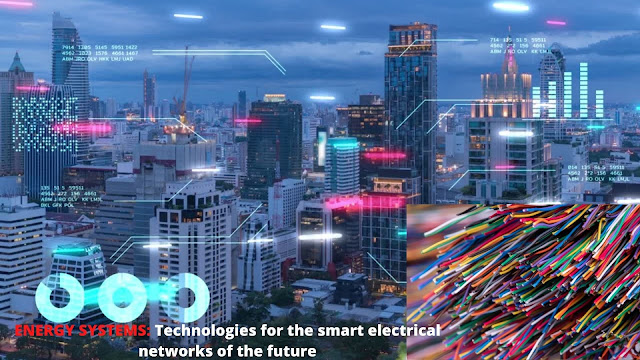Energy Systems: Technologies for the smart electrical networks of the future
 |
Energy Systems The increasingly intense use of technology |
Energy Systems The increasingly intense use of technology, in applications such as smart homes, electric vehicles, and a legion of sensors of various types connected to the network, tends to reflect a vertiginous increase in the energy demand. At the same time, the concern with sustainability and environmental preservation leads to research for solutions that allow greater operational and energy efficiency through the use of distributed and renewable energy sources.
CPQD works in the development of technologies, methodologies and algorithms applied to energy systems, intending to expand the capacity, reliability, availability, and quality of electricity supply.
It develops innumerable R+D+i projects covering topics such as:
Batteries and charging and traction systems for electric vehicles
Evaluation of the performance of components for electrical mobility (electric vehicle, electrolier, electrical infrastructure, etc.).
Impact assessment of electric vehicles, distributed generation, and advanced measurement infrastructure in the distribution network.
development oF advanced batteries for use in distributed generation
Development of methodologies for improvements in real-time operations, planning, and maintenance of distribution systems.
The developments are subdivided into technological components that cover the areas of energy storage, advanced measurement, advanced automation, methodologies and algorithms, energy conversion, architecture and topology of energy systems, compliance, and regulation. The set of skills guidelines allows CPQD to carry out research, development, and innovation projects covering topics such as electric mobility, renewable sources, distributed generation and planning, maintenance, and real-time operating systems.
The main competencies of CPQD on this platform are:
ENERGY STORAGE
Technologies applied to energy storage systems (Energy Storage System – ESS) for peak-shaving, energy quality, security copy systems, electric vehicles, energy harvesting, among others. Examples of technology are:
- Electrochemical storage (promo-acid, alkaline, lithium-ion, hydrogen CAC, etc.)
- Electrical storage (supercapacitors/ultracapacitors)
- Thermal storage (cryogenic, steam/molten salt)
- Mechanical storage (compressed air, water pump, flywheel, GMG)
- Mechanical and thermal packaging
ADVANCED ENERGY AUTOMATION
Technologies for advanced automation of energy systems with a focus on the evaluation of electrical networks in different applications. Competencies involved
Power system automation protocols (eg ICCP, DNP3, IEC 61850, etc.).
Protection systems that make it possible to detect defects or other dangerous or intolerable conditions in equipment, check system conditions, etc.
Power Line Communication (PLC) for data transmission using the transmission and distribution lines of the electrical energy network.
ADVANCED ENERGY MEASUREMENT
Allows information, data, and command interactions, readings, and technology for measuring, controlling, and managing utility resources. These are examples of skills
Measurement protocols (eg ABNT, SIBMA, DLMS, etc.)
- multi measurement
- micro measurements
- electrical energy quality
- Electrical energy measurement
ADVANCED METHODOLOGIES AND ALGORITHMS
Specialized methodologies and algorithms for different applications in energy systems, such as:
Mathematical modeling and optimization techniques for solving problems of operation and planning of electrical networks (self-healing, equipment dispatch, Volt-VAr control, fault location, etc.)
- Energy quality assessment
- Interconnection and interoperability between electric and electric vehicles
- Meter security
- Battery life check or battery degradation
- Energy management for Battery Management System (BMS)
ARCHITECTURE/TOPOLOGY OF ENERGY SYSTEMS
Technologies for architectural design of generation networks, transmission and distribution of energy, and new equipment that comprise the system (distributed generation, electric vehicle).
ENERGY CONVERSION
Technologies for energy conversion and control (AC/DC, DC/DC, DC/AC) using switching devices in low, medium, or high power and frequency. Some examples:
- Electroliners for AC and/or DC charging of electric vehicles (slow, semi-fast, and fast)
- Management and control systems
- Inverters and Converters/li>
- Battery management system (BMS)
COMPLIANCE AND REGULATION
Techniques and methods for evaluating the conformity of products that aim to establish and comply with quality standards suitable for function, operation, and use. Some examples: acoustic analysis, batteries, mechanical vibration analysis, compliance of battery charge controllers for photovoltaic systems. Compliance with regulations and technical standards of ABNT, Anatel, and Inmetro.














Nice work
ReplyDeleteUseful content
ReplyDelete